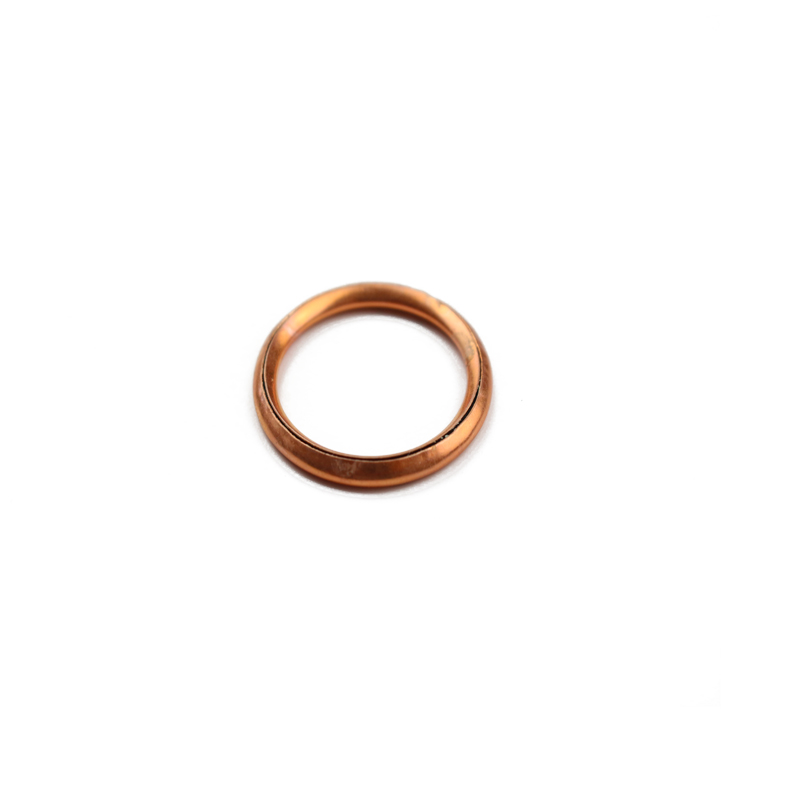bonded seal ring
Understanding Bonded Seal Rings Applications and Benefits
Bonded seal rings, often referred to simply as bonded seals, are specialized sealing components designed to create a secure barrier between two mating surfaces in mechanical assemblies. These rings combine the characteristics of an O-ring and a traditional seal. They consist of a rubber sealing element bonded to a metal washer, enhancing both functionality and durability. This innovative design provides a reliable solution to prevent leakage in various applications, making bonded seal rings a favored choice in automotive, aerospace, and industrial contexts.
One of the primary benefits of bonded seal rings is their ability to accommodate different sealing functions simultaneously. The rubber portion of the ring provides exceptional flexibility, allowing it to compress under pressure to form a tight seal. Meanwhile, the metal washer provides structural rigidity and helps to withstand significant loads, which is particularly valuable in high-pressure environments. This design synergy makes bonded seals suitable for both static and dynamic applications, where varying levels of movement and pressure might occur.
Bonded seal rings are especially popular in the automotive industry, where they are used in engines, transmissions, and hydraulic systems. For instance, in automotive engines, these seals play a critical role in preventing oil and coolant leaks. The heightened pressures and temperatures experienced in engine compartments necessitate robust sealing solutions, which bonded seals provide effortlessly. The combination of rubber and metal ensures they maintain integrity under thermal cycling and pressure fluctuations, contributing to the overall reliability of vehicle components.
bonded seal ring

Beyond automotive applications, bonded seal rings find extensive use in the aerospace sector as well
. Aircraft systems require lightweight yet effective sealing solutions capable of withstanding extreme conditions, including temperature variations, high altitudes, and vibration. The unique construction of bonded seals meets these demanding criteria, ensuring that critical systems, such as fuel and hydraulic lines, perform without leaks, thereby enhancing overall flight safety.Another advantage of bonded seal rings is their ease of installation. Compared to traditional sealing methods, bonded seals often require less assembly time and align more readily with mating surfaces. The integrated design minimizes the risk of misalignment, which can lead to premature seal failure. This user-friendly aspect is particularly beneficial for manufacturers looking to optimize their assembly processes and reduce production costs.
Moreover, the versatility of bonded seal rings allows them to be customized for specific applications. They can be manufactured in various sizes, materials, and hardness levels, ensuring compatibility with diverse fluids—whether they are oil, water, or gas. This adaptability opens doors for industries looking to create specialized solutions tailored to their unique challenges.
In conclusion, bonded seal rings emerge as an indispensable component in modern engineering and manufacturing. Their innovative design, combining flexible sealing capabilities with robust metal support, facilitates reliable performance across various industries. Whether in automotive, aerospace, or industrial contexts, the application of bonded seal rings serves to enhance system integrity, prevent leaks, and improve overall functionality. As technology advances and industries evolve, the role of bonded seal rings is likely to expand further, showcasing their importance in maintaining efficient and safe operations.
-
Understanding the Front Main Engine Seal: Purpose, Maintenance, and Installation
News Jul.29,2025
-
Understanding O-Rings and Seal Rings: Types, Applications, and Custom Solutions
News Jul.29,2025
-
Understanding Crankshaft Oil Seals: Rear Seals, Pulley Seals, and Their Role in Engine Integrity
News Jul.29,2025
-
The Importance of Front and Rear Crankshaft Seals in Engine Performance and Oil Management
News Jul.29,2025
-
Crank Oil Seals: Functions, Types, and Cost Considerations in Engine Maintenance
News Jul.29,2025
-
A Comprehensive Guide to O-Rings and Seals: Types, Materials, and Global Applications
News Jul.29,2025
-
Mastering Diesel and Performance Engine Maintenance: A Guide to Critical Oil Gaskets
News Jul.28,2025
Products categories















